The Great Hummingbird Migration Is Here – Discover 5 Key Ways to Help Them On Their 4,000-Mile Journey
From late August, intrepid hummingbirds will travel from Alaska to Mexico. Find out how you can support migrating hummingbirds on their fascinating journey

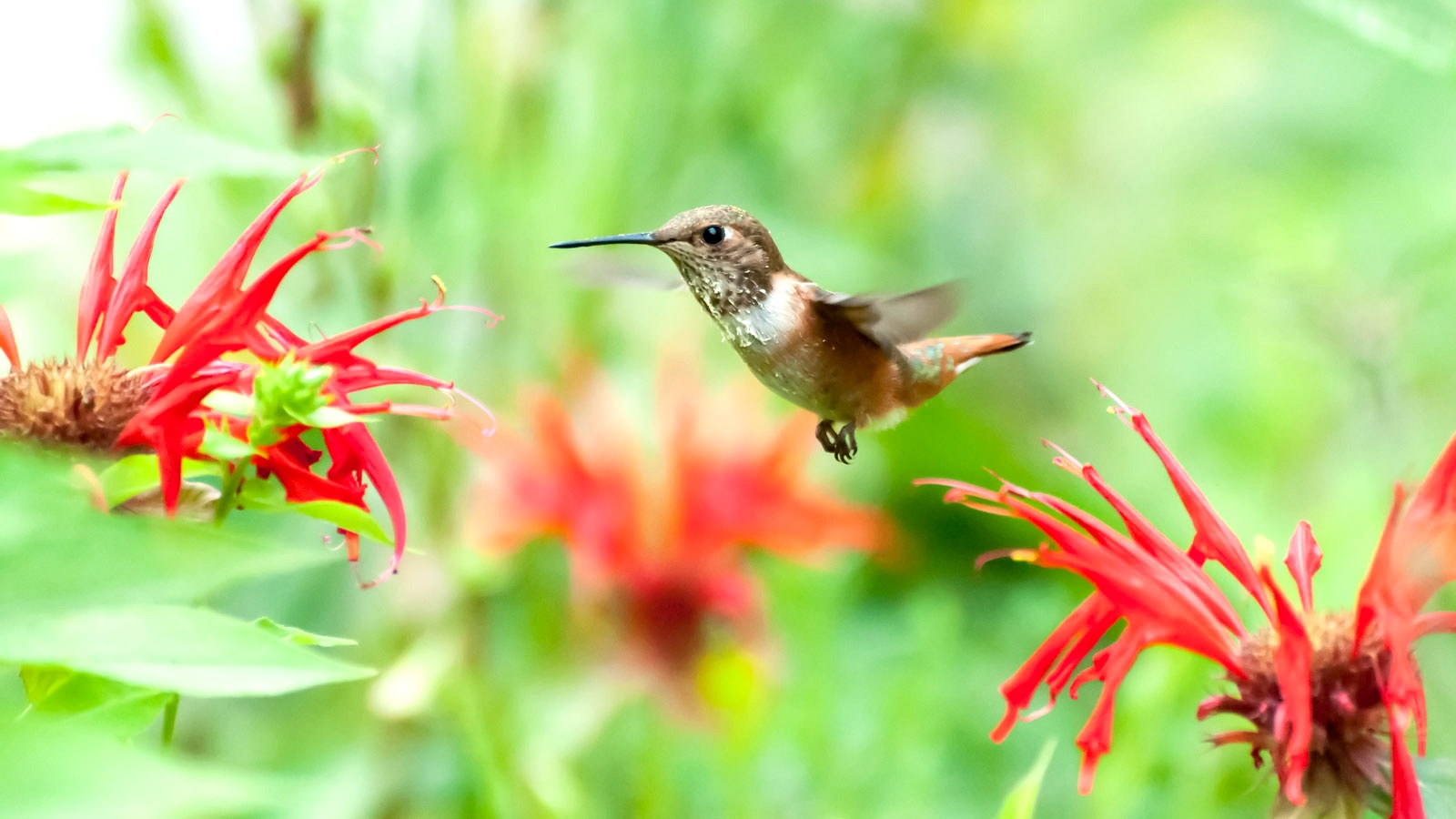
Treasured for their brilliant color and rapid flight, dazzling hummingbirds create spectacular moments of joy when they visit our gardens. One of the highlights of summer, they poke their beaks in nectar-rich flowers, splash in well-positioned water features, and cast magical flurries of color as they dart in and out of native plantings.
As summer reaches its conclusion, many hummingbirds will be starting their migration south – with many traveling up to 4,000 miles across distances as far apart as Alaska and Mexico. Still, there is plenty we can do to attract and support migrating hummingbirds to keep them happy and healthy as they make their remarkable journey south. Here's how to improve backyards for hummingbird migration, give them vital support on their journey – and enjoy their antics as they pass by your window!
5 Ways to Support Migrating Hummingbirds
To support these charming creatures as they embark on their epic adventure, it can help to understand the migration of hummingbirds, when it is taking place, and which birds you are likely to see flitting in and out of gardens and feeding from your native flowers. Hummingbird migration generally occurs at two points throughout the year – fall and spring. At the later end of August and September, hummers are migrating south for warmer climes to see them through to spring.
So you can expect birds to begin moving south in late summer, as the weather begins to cool. Migration continues through fall, until the birds have reached a much warmer climate. Spring migration will begin in late winter, with birds first returning to mild-weather regions. This is especially true of western species like Allen's hummingbird. Ruby-throated hummingbird migration back (and that of other Eastern species) occurs later in spring, heading back north over the span of several months.
Hummingbird migration paths vary by species, so this will have some impact on the hummer visitors you are likely to see in your particular backyard. Western gardeners will see the greatest range of species. Anna's, Allen's and black-throated hummers are some of the most common hummer visitors likely to visit gardens on their way south at the tail end of summer. Rufous hummingbirds may also be spotted in northern areas. Eastern US gardeners will be most likely to welcome ruby-throated species, their migration continuing through Canada.
1. Preserve Plants – Don’t Deadhead
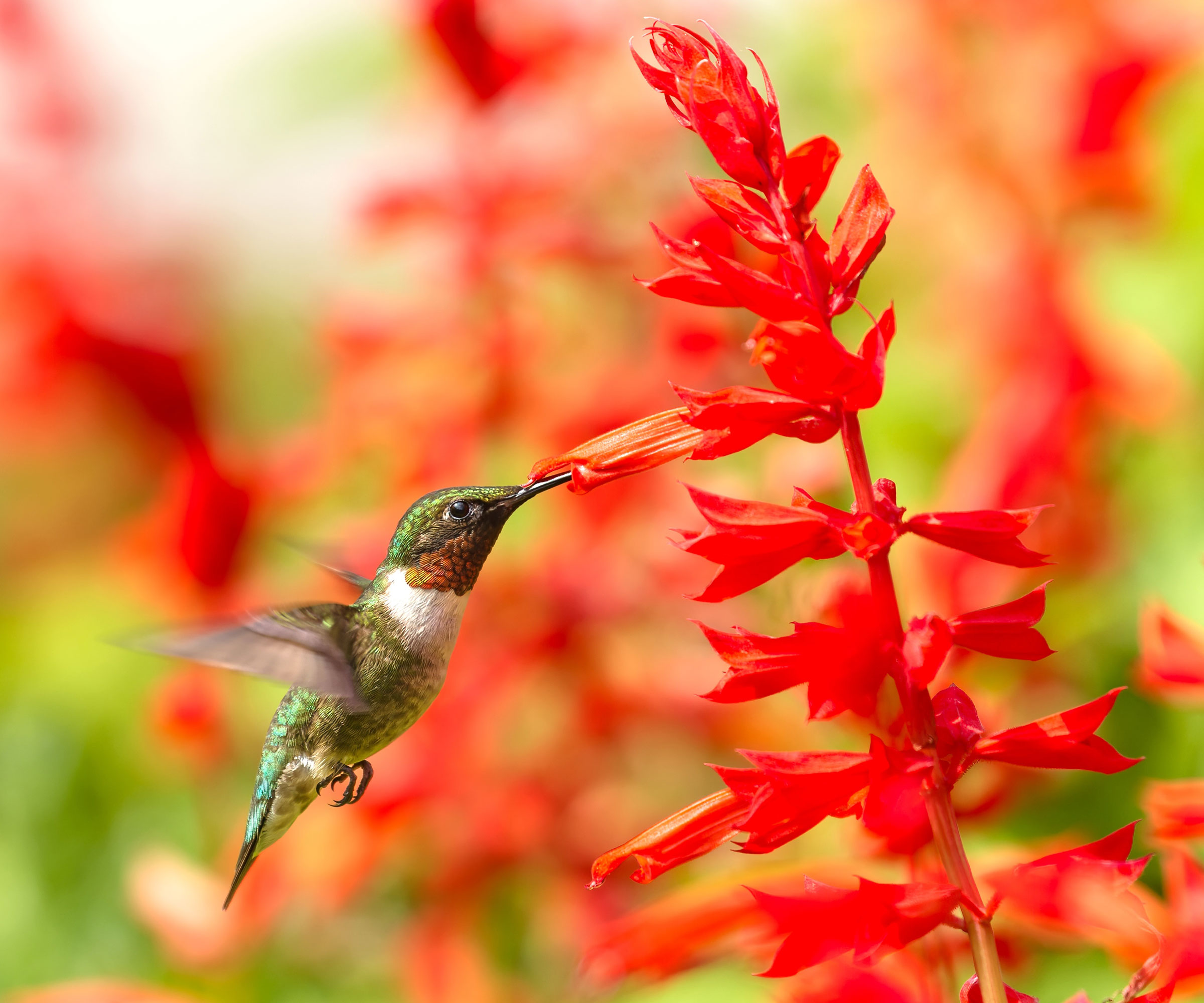
Hummingbirds are attracted to brightly colored, nectar-rich blooms. Popular plants tend to have tubular flowers and dazzling hues – and many of the quintessential nectar-rich hummer treats are still in full swing as August winds down. The secret to enticing as many passing migratory hummingbirds as you can is in one simple gardening strategy: be careful not to deadhead key hummer plants!
It’s great if you are growing key flowering summer plants that these birds love – the trick is to leave the flowers in place, even if the odd one looks a little weather-worn. The hummers won’t mind – they’ll appreciate the nectar nestling in those slightly faded floral packages! Some of the key flowering plants not to cut back include:
- Bee Balm: Hummingbirds are drawn to bee balm by its prolific bloom. Though shades of lavender and purple are most common, magenta pink and hot red varieties are especially compelling to thirsty hummers.
- Penstemon: Hummers adore these delicate tubular blooms. Flowering over the course of several weeks and well into September, they are an excellent choice if you want to further support migrating species.
- Trumpet Vine: Native to much of the US, trumpet vines are a glorious addition to late-season flower beds. Bright red blooms persist until first frost, aiding hummers greatly through fall migration. Give large vines a strong trellis so they stay at their best well into fall.
2. Provide Supplemental Food
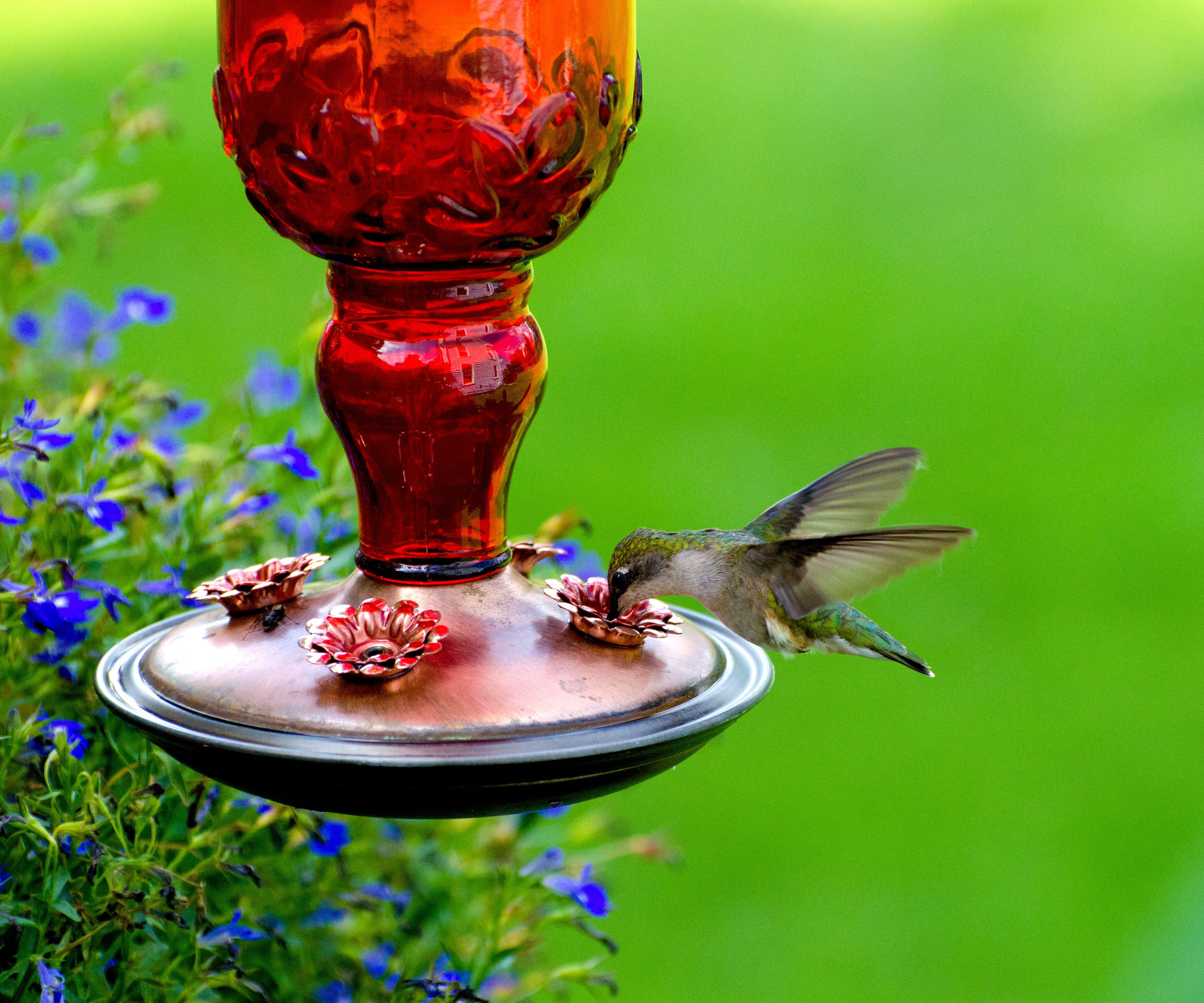
Hummingbird feeders add a great deal of enjoyment to garden spaces. Alongside flowering natives and nectar-rich blooms, some well-placed feeders bolster food reserves so you can nourish as many hungry bird visitors as possible on their migratory path south. They are an excellent insurance policy alongside hummer-friendly flowers, particularly as certain perennials start to dwindle in September. Choose vibrant colors and helpful perch options – we love the Nature’s Way Hummingbird Feeder, available at Amazon, with its pretty handblown pattern.
Fill your feeders with a high-quality sugar solution specifically tailored to the needs of hummingbirds. The Gardening Know How Team likes Perky Pet’s Clear Nectar, available at Amazon in cans of four. Don’t forget to keep checking feeders, topping them up every day, and cleaning them regularly.
3. Supply Sources of Water
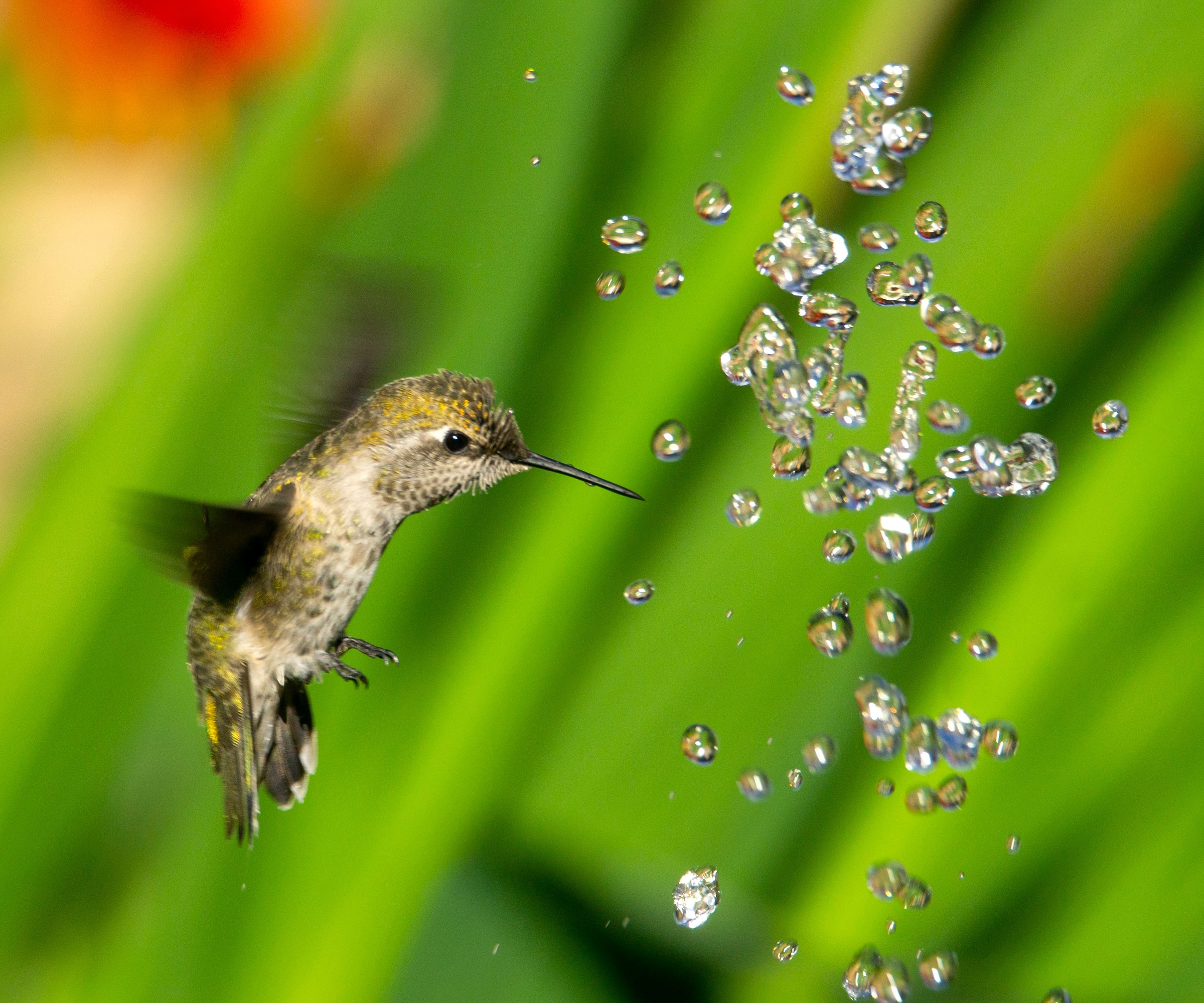
Access to fresh, clean water will help to attract migrating species – as a source of hydration and a way to keep cool in the midst of their journey of several thousands of miles. Bird baths, fountains and other water features give them a chance to play and preen. Misters (which provide a light spray) and drip systems are wonderful for hummers looking for a quick drink and a chance to wet their wings.
To help hummers visit your bird bath, make sure it combines a shallow tray, perching options, and some element of color or sparkle. They will also be placed at an optimum height for passing hummers to glide in and out with minimal fuss and effort. Try the Dreamsoul Deckmounted Birdbath Bowl, available at Amazon, with an adjustable clamp and a tasteful dark copper appearance. Be sure to keep the bath clean and replenished on a regular basis, every day during late summer.
4. Use Anti-Collision Stickers
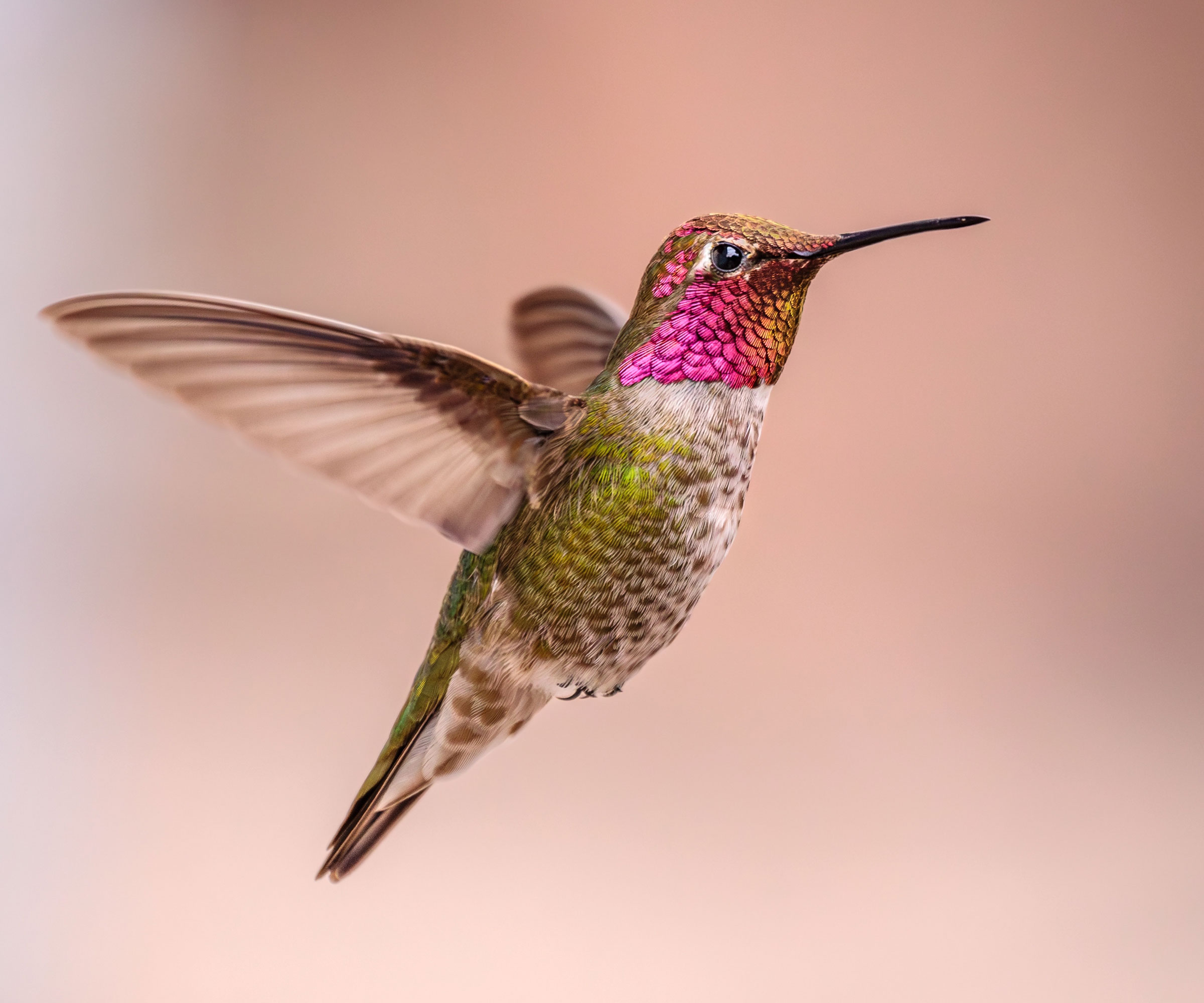
As hummingbirds fly past your yard, it’s important to be considerate to the fact that they are in a new environment. The hummingbird migration path is full of new sights and experiences – and it’s easy for them to be disorientated. While it’s incredibly important to support them with nourishment and refreshment on their way, it’s just as critical to allow them a safe onward journey. On late summer days, with the glare of the sun reflecting off windows, it’s quite easy for high-speed hummers to inadvertently fly into windows – stunning themselves, or worse.
To keep hummingbirds safer as they zip past your gardens, it’s a good idea to attach special anti-collision stickers to your windows. The WindowAlert Anti-Collision Window Stickers, available from Amazon, are specially designed window stickers that reflect ultraviolet light as a way of preventing hummingbirds from accidentally flying into the glass. It’s also a good idea to keep any patio or balcony lights switched off at night to enable hummers safe evening passage in relatively dark night skies.
Sign up for the Gardening Know How newsletter today and receive a free copy of our e-book "How to Grow Delicious Tomatoes".
5. Give Shelter and Space
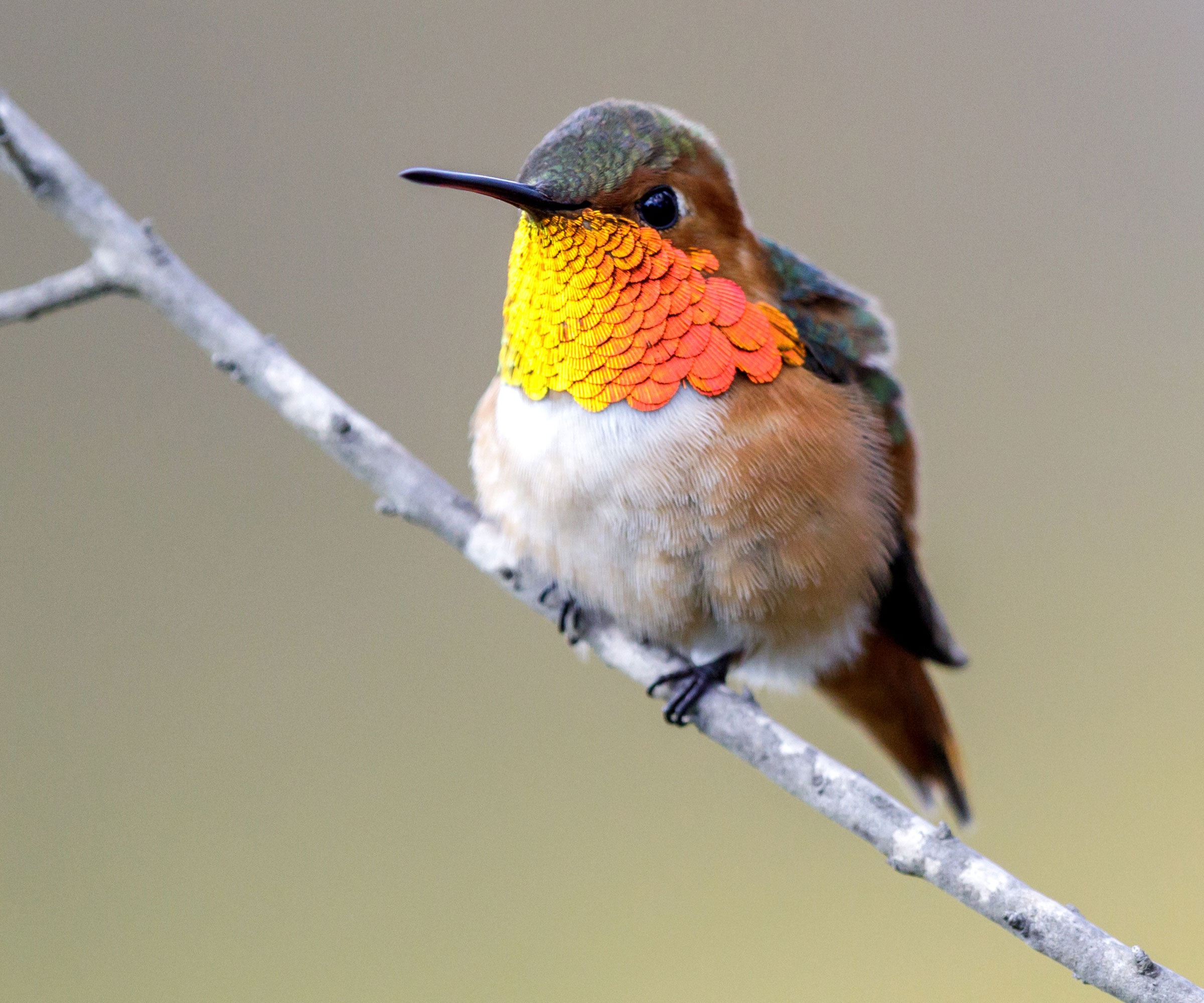
Shelter is critical for passing hummingbirds. Beyond feeding, migrating species require a safe place to rest to help break up their long journey. Though the addition of perches can help create a more hospitable environment, the presence of mature trees and shrubs will be most beneficial. This will allow birds to quickly flee to safety, should the threat of danger occur. It also creates a mellow atmosphere for birds.
Hummingbirds are especially drawn to trees with lots of secluded perches or warm, inviting colors, and ideally both! Some favorite trees for hummingbirds include the red buckeye, the Eastern redbud, the chaste tree, and the crab apple. It’s also important to keep the areas around key trees clean and tidy, allowing free access for any hummingbirds migrating past to flit in and out in relative peace and safety.
Frequently Asked Questions
When do migrating hummingbirds come back?
Hummingbirds are known for their ability to return to the same region each year. Experts have noted an especially strong preference to their breeding grounds and locations where food was found to be abundant. This makes their return to specific feeders and backyard gardens a common occurrence. However, they tend to stay in Mexico and elsewhere at the southern most parts of their migration path until early spring.. Hummers that have migrated from Alaska will return in April and May.
What is unsafe for migrating hummingbirds?
Those hoping to attract hummingbirds should make safety their main priority. As well as making sure that all feeders and bird baths are clean and well secured, you need to keep an eye out for potential predators. Backyard spaces should be well secured, helping to keep the birds from the threat of cats.
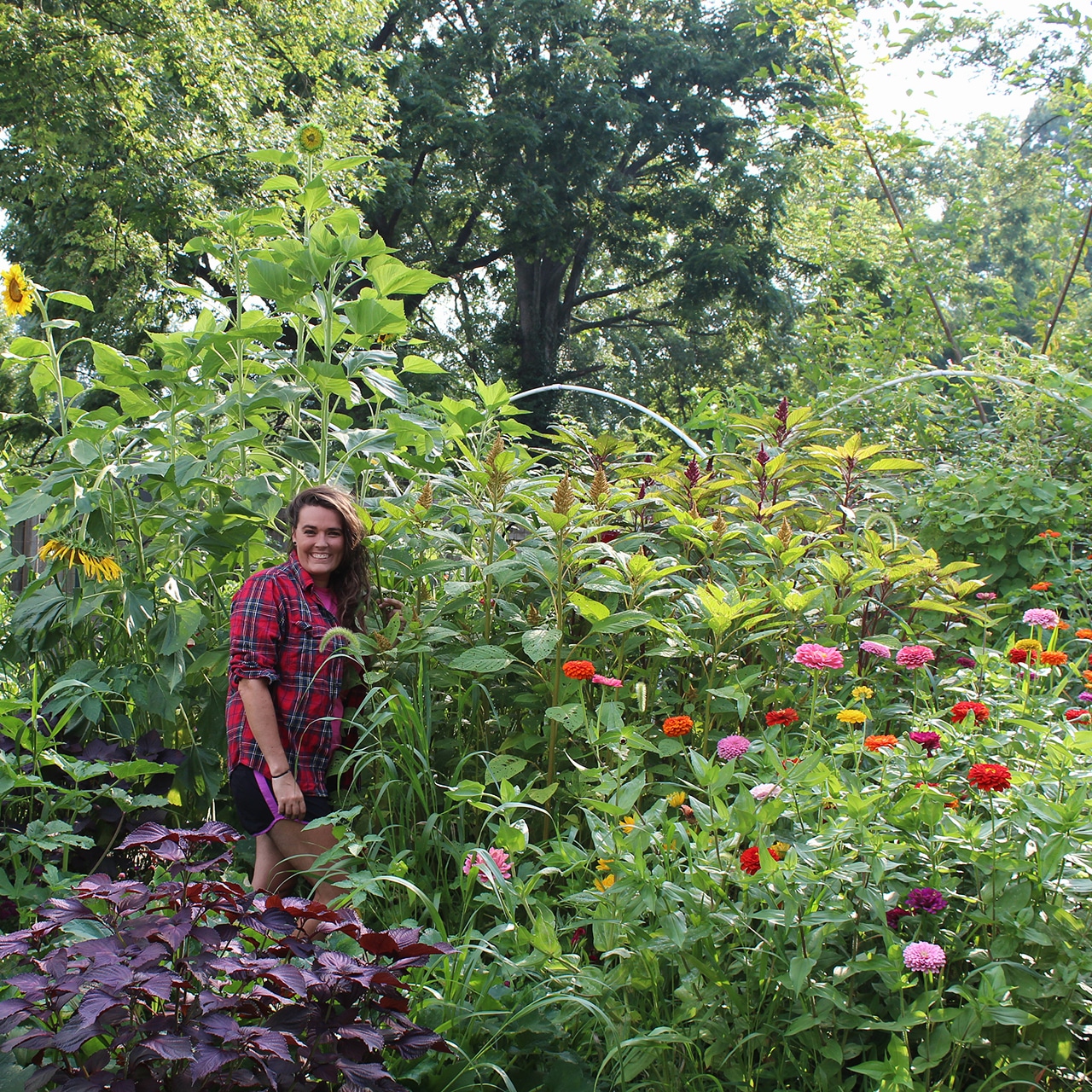
Tonya Barnett has been gardening for 13 years. Flowers are her passion. She has transformed her backyard into a cut flower garden, which she regularly chronicles on her YouTube channel http://www.youtube.com/@tonyawiththeflowers.
- Janey GouldingContent Editor
- Amy DraissDigital Community Manager
